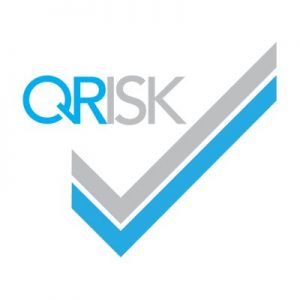Many media sources have reported that when taken at bedtime, blood pressure pills work better, reducing the risk of heart attack and early death.
It follows a large trial conducted through northern Spain general practices. It included about 20,000 people with high blood pressure (age 60 on average).
Half the people were told at bedtime to take their blood pressure tablets, and the other half at waking. These were followed up for an average of 6 years, during which time about one in ten suffered a heart attack, heart failure or stroke, or died from cardiovascular disease.
The study found that people who take their blood pressure tablets at bedtime the night blood pressure was significantly lower and 45% less likely to have one of these results.
The trial lend support past studies with similar findings. However, the trial just analysed Spaniards from white ethnic backgrounds. It also does not look at the effects of time on a certain blood pressure tablets. Therefore, as the researchers say, more studies are needed before we see whether the advice on how to take blood pressure medication should be changed.
Unless you are taking diuretics (water tablets), which may mean you have to get up a lot at night to urinate, there should be no negative effects from taking them at night. But it might be worth talking to the GP before making changes in how you take your medications, especially if you take several different medications.
What is the story’s origin?
This study was conducted by researchers from the University of Vigo and several other institutions in Spain. This project received financial support from the Spanish government and several other organizations.
The study was published in the peer-reviewed open European Heart Journal and is available for online access.
British media coverage of this study was widely accurate.
What kind of research was this?
This was a randomized controlled trial aimed to see whether it is better to take blood pressure tablets at bedtime or in the morning. A randomized trial is the best way to see the effectiveness of treatment for randomization have to balance differences in patient characteristics, such as health and lifestyle, which could affect the outcome.
One slight limitation is that the open-label trial (not blind) means patients and researchers are aware when they are taking their tablets.
An ideal design may have provided all the patients tablet morning and night, one set into the other drug and matching placebo (dummy tablets). However, the length of this trial will be extremely difficult. There could also be the risk of error (for example, patients taking placebo tablets 2 sets of the day and there is no cure them).
What did the research involve?
The trial was conducted between 2008 and 2018 in 40 general practices in northern Spain. This includes adults diagnosed with high blood pressure (hypertension) in accordance with the standards and criteria prescribed one or more blood pressure medications.
They recruited a total of 19 084 patients (mean 60 years, 56% male) who were told to take their medication at bedtime or in the morning. About a quarter of all patients recruited had type 2 diabetes, 43% were obese, 15% were smokers and 10% already have a past cardiovascular events such as heart attack. Patients wear different types of blood pressure medications.
Patients were followed up with clinical assessment at least once a year, which included blood tests and wore blood pressure monitors for 48 hours (ambulatory blood pressure monitoring). The main outcome of interest is the patients who experienced one or more:
- heart attack
- stroke
- a procedure to open the heart arteries (like stent insertion)
- heart failure
- death from cardiovascular disease
They adjusted their analysis for the patient’s age, sex, cholesterol, initial blood pressure, smoking, diabetes and kidney disease.
What is the basis of the results?
During an average follow-up of 6 years, in 1752 adults (9%) had a major cardiovascular outcomes.
Patients who take their blood pressure tablets at bedtime had a 45% lower risk of any of these events (hazard ratio [HR] 0.55, 95% confidence interval [CI] 0.50 to .61). The researchers also found a decreased risk when they see each of the individual outcomes, such as heart attack or stroke.
Results of 48-hour blood pressure monitoring showed that patients taking their tablets at bedtime had lower blood pressure at night. There was no difference in daytime blood pressure between the two groups.
There was no difference between the groups in any of the side effects of treatment. There was also no difference in how many patients do not take their tablets should be, or when they should.
How did the researchers interpret the results?
The researchers concluded that drug-taking blood pressure on sleep results in improved control of blood pressure “and, most importantly, markedly reduced the occurrence of major cardiovascular disease events”.
Conclusion
It is a worthwhile experiment to investigate the best time to take blood pressure medication. It has certain powers of a very large sample size and long duration of follow-up, which is quite rare for a randomized trial.
They found that taking the medication at bedtime lowers blood pressure at night and reduce the risk of heart attacks and other cardiovascular events. They found these differences not only when looking at all the combined event, but each individual. This suggests that when you take the drugs makes a real difference. This lends support to previous trials that have had similar findings.
There are currently a variety of blood pressure medications do not have a strict prescription information at the time of the day they need to be taken, with the exception that diuretics (water tablets) are often taken in the morning to avoid the need to urinate frequently at night.
Despite the positive findings, there are some limitations to the trial. These include that the researchers were not able to analyze the effect of time for individual anti hypertensives. Also the study was held in mainly Spanish, exclusively white ethnic populations that may not be representative of other populations.
The researchers themselves acknowledge that their test results now need to be validated in other study populations. More conclusive findings might in the future lead to a change in the way anti hypertensives are prescribed.
The research
Hermida RC, Crespo JJ, Domínguez-Sardiña M, et al.
Bedtime hypertension treatment improves cardiovascular risk reduction: the Hygia Chronotherapy Trial
European Heart Journal. Published online October 22 2019

